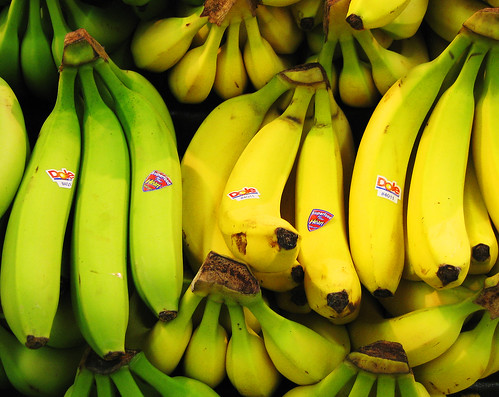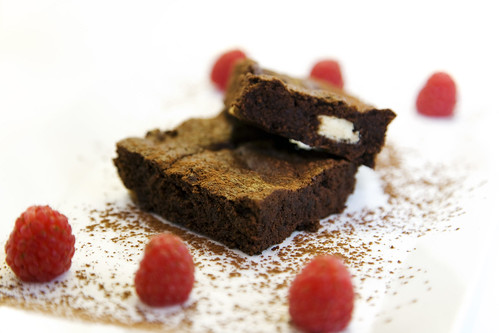Only a few days left until the end of the year, which means it's time to take a look at the inhuman experiments of 2009. For a summary of the experiments of 2008, click here.
1. Maca root experiment
The purpose of this experiment was to see whether taking maca powder increased energy and sex drive. While those who sell the stuff claim that maca is the ancient Incan remedy for just about every problem you can imagine, the scientific evidence behind it is more modest. That said, a couple of studies have indeed shown improved libido and increased sperm count from maca, so the claims are not entirely baseless.
Personally, I didn't notice anything different on the days I took maca, even in large doses. I speculated in the experiment conclusion that perhaps maca is only effective in those whose sex drive and energy levels are low to begin with. Another possible reason suggested by one of the studies is that only red maca is effective while yellow and black maca are not. The maca powder I purchased was yellow.
2. Retinol cream experiment
The retinol cream experiment was quite unique in the sense that it's one of the very few experiments that actually gave a positive result. The goal was to see whether retinol, the animal form of vitamin A, would improve skin quality. Since retinol is less harsh on the skin than retinoids, I thought it would be useful to try a retinol cream before moving on to the stronger stuff.
While the appearance of my skin didn't change visibly during the experiment, there was an unexpected growth of new hair on my left temple. I even took a few pictures to show I wasn't making it up. I'm not sure whether the effect was simply due to increased collagen production and skin cell proliferation or something else, but if you're suffering from hair loss, I would recommend giving retinol a go. As another experiment, I'm currently applying tretinoin on my face to see if retinoids are even more effective.
3. Tocotrienol experiment
Like tocopherols, tocotrienols are a form vitamin E. Most multivitamins contain only alpha-tocopherol, but it's the tocotrienols that seem to have all the interesting health benefits. Well, at least potential health benefits. One study reported an increase in hair growth in all subjects taking the tocotrienol supplement. Such a result seemed so unbelievable that I had to try it out for myself.
One major problem with this experiment was that tocotrienol supplements are not cheap, which meant that the duration of the experiment was only two months. As I wrote in the conclusion, I didn't see a visible increase in hair growth, but there appeared to be a reduction in the number of hairs lost daily. If I get my hands on an affordable tocotrienol supplement, I look forward to repeating the experiment to see if the reduction was due to tocotrienols or something else.
4. Topical vitamin C, vitamin E & ferulic acid experiment
In this experiment, I applied a topical consisting of ascorbid acid, vitamin E and ferulic acid on my face. All three compounds have some evidence behind them showing that they increase collagen production and improve skin quality. The product I was testing was called SkinCeuticals CE Ferulic acid, which is really expensive if you buy it the usual way; I purchased several smaller sampler bottles online, which was cheaper. Another way to save cash is to make a similar product yourself.
In the experiment conclusion I reported that I didn't see any improvement in my skin quality. A possible reason is that some of the liquid in the sampler bottles was apparently oxidised, which would render it useless. I concluded that it was not worth the price to keep using the product. However, some months later I read a book on skin aging that made me reconsider the whole thing, and so I decided to re-visit the experiment and order another set of sampler bottles. The experiment is still going on, and so far, none of the samplers have contained oxidised liquid.
5. Vitamin D3 experiment
As I'm sure you've noticed, vitamin D3 was really big in the health blogosphere this year. After reviewing the data I concluded that I've very likely been deficient in vitamin D3 for most of my life and decided to start supplementation. I know standing naked in the sun to get the required dosage is a big thing in the paleo circles, but at these latitudes it's not very feasible. Besides, sun damage seems to be a major cuplrit in skin aging.
For a few months, I took 2,000 IU per day and then increased to 5,000 IU. This got my serum 25-hydroxyvitamin D levels up to 113 nmol/L (45 ng/mL), which is in the optimal range. I'm still taking 5,000 IU daily, and while it hasn't given me complete immunity against all infections, this is the first experiment that has resulted in a reduction of colds. Not even intermittent fasting or the paleo diet did that.
6. Hyaluronic acid experiment
In a sort of continuation to my experiment with MSM, chondroitin and glucosamine, I decided to try oral supplementation with hyaluronic acid. Despite the high price, hyaluronic acid seems to be quite popular and is said to improve skin quality and promote hair growth. The evidence for oral supplements is shaky, however, except maybe for joint problems.
Because hyaluronic acid is so damn expensive, the experiment lasted for only a month, which is probably the shortest duration of any experiment on this blog. I didn't see any difference in skin quality or hair growth, but feel free the take the results with a grain of salt. I think hyaluronic acid may actually be quite useful, but next time I'd rather try applying it topically.
7. Tea tree oil vs. Korean red ginseng experiment
Now here was an experiment that seemed to go on forever. In this "classic" hair growth battle, Korean red ginseng and tea tree oil fought it out on my legs. Since Korean red ginseng (also known as Panax ginseng) has been shown to promote hair growth, and tea tree oil is supposed to be anti-androgenic, I was expecting ginseng to increase and tea tree oil to suppress hair growth on my legs.
After meticulous experimentation with various carrier oils and different parts of the body, I got sick of the whole thing and called it quits without ever seeing any results. You can read the "exciting" conclusion if you're interested in the details. All in all, I would think twice before adding these two to a hair loss regimen.
8. Intermittent fasting experiment
A couple of months ago I wrote on the blog that a year had passed since I began my intermittent fasting experiment. While I've occasionally experimented with different variations of the same thing, I have mostly followed the 24/24 hour cycle of feasting and fasting. That is, for most of the year I stopped eating at about 6 PM and then started eating again the next day at 6 PM.
After the last post describing my year on the diet, I've slowly returned towards a more "normal" way of eating again. Compared to other people, I still have lengthy periods of not eating, but I'm no longer on the strict 24-hour cycle. The main reason for the change is that intermittent fasting does not appear to increase lifespan like caloric restriction does, and life extension is my main interest, after all. For losing weight and improving insulin sensitivity it still appears to be beneficial, provided you do it the right way.
Beyond weight loss, however, I'm thinking there are better ways to incorporate fasting into my health regimen than the 24-hour cycle. Perhaps longer fasts done less frequently, perhaps periodical protein restriction. I'll write more about the subject once I do some more reading. Anyway, I feel pretty good about being able to follow my intermittent fasting routine so strictly for an entire year. Life extension or not, it surely taught me to think of hunger in a new, more positive way. The looks and comments I got from family members, friends, and strangers alike were pretty entertaining, too.
9. Emu oil vs. Hair Again experiment
This experiment was another battle between two hair growth products. This time the competitors were emu oil and a topical gel called Hair Again. Emu oil comes up every year in hair loss forums, but the fact is that the evidence behind it is very limited, to say the least. The commercial product, on the other hand, contained many ingredients that looked quite useful.
After eight months, I concluded that the battle had no clear winner, since there was no change on either side of my face. Yes, the hairs I grew with the retinol were still there, but no further improvement was seen. I still have some of the emu oil left, but I haven't found much use for it ever since I ran out of the topical gel. Sadly, even if I wanted to continue the experiment I couldn't, because the company that makes the gel refuses to ship to Finland any longer.
10. Nootropic experiment
The purpose of this three-way battle between taurine, acetyl-L-carnitine and ginkgo biloba was to see if any of them were effective as nootropics, either taken alone or in combinations. My subjective evaluation of my energy levels, mood, and ability concentrate would serve as the indicators. As an objective measurement, I compared my scores in a memory game meant to improve IQ.
For all the money I spent on these supplements, it's a bit of a disappointment that none of them seemed to do anything for me. As I wrote in the experiment conclusion, one possible reason why ginkgo didn't work is that the plant extracts may differ significantly among brands. Acetyl-L-carnitine and taurine, on the other hand, should be pretty much the same stuff regardless of the manufacturer. In the future, I may try another brand of ginkgo, and I'm thinking of using taurine to prevent glycation and hangovers. Further experiments may follow.
Conclusion
So there you have, the ten inhuman experiments of 2009. Once again, not many positive results, but hey, at least we've learned something, right? As you can see in the top-right corner of the blog under "Current Experiments", many of the experiments that started this year will continue into 2010, so stick around and see how they end.
Finally, I'd like to thank all the readers for your encouraging comments and questions during the past year – and for pointing out the mistakes, of course! You've been very helpful in making this blog better, and I hope the improvement continues the next year. Until then, happy holidays and take care!



















